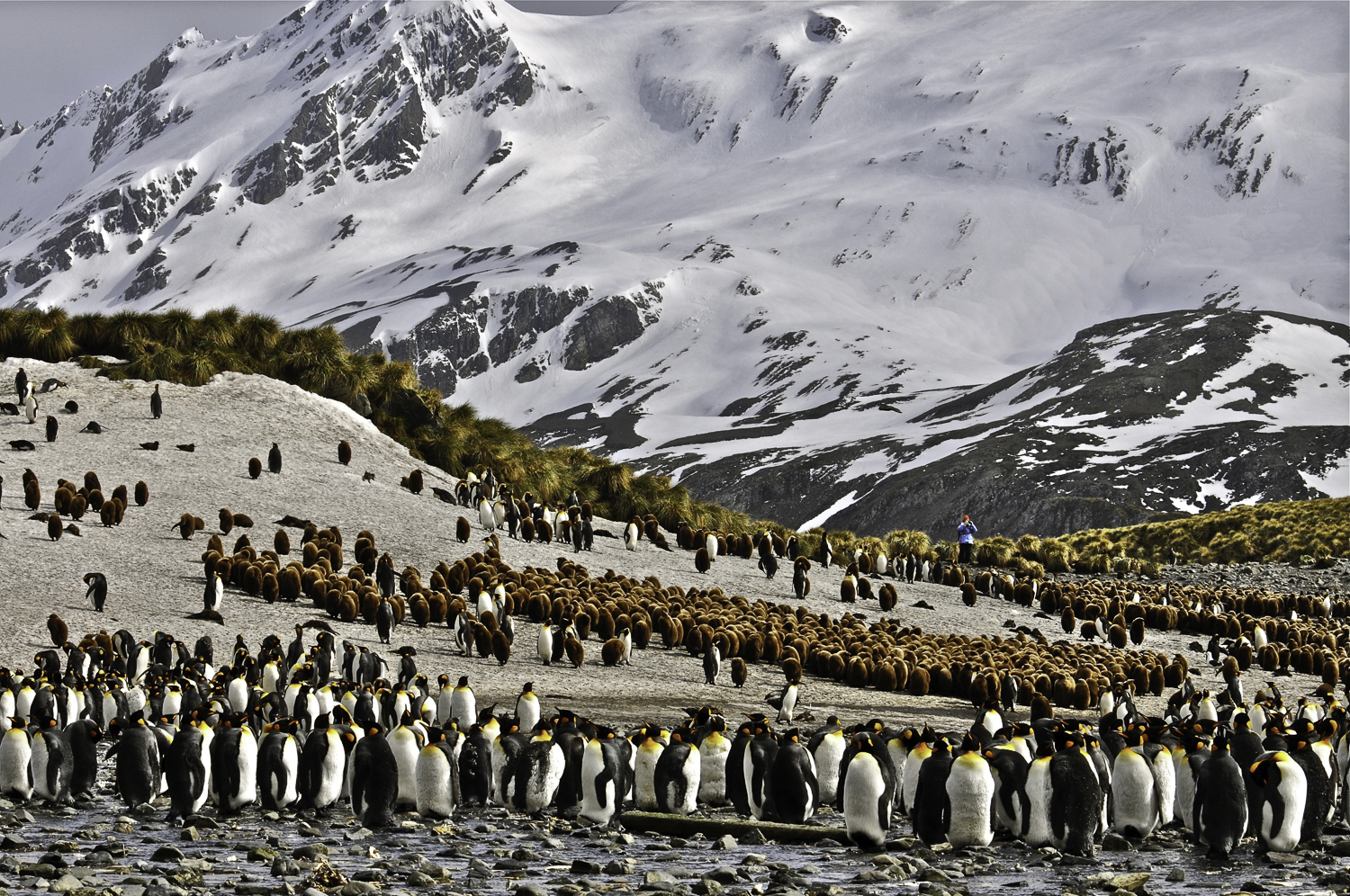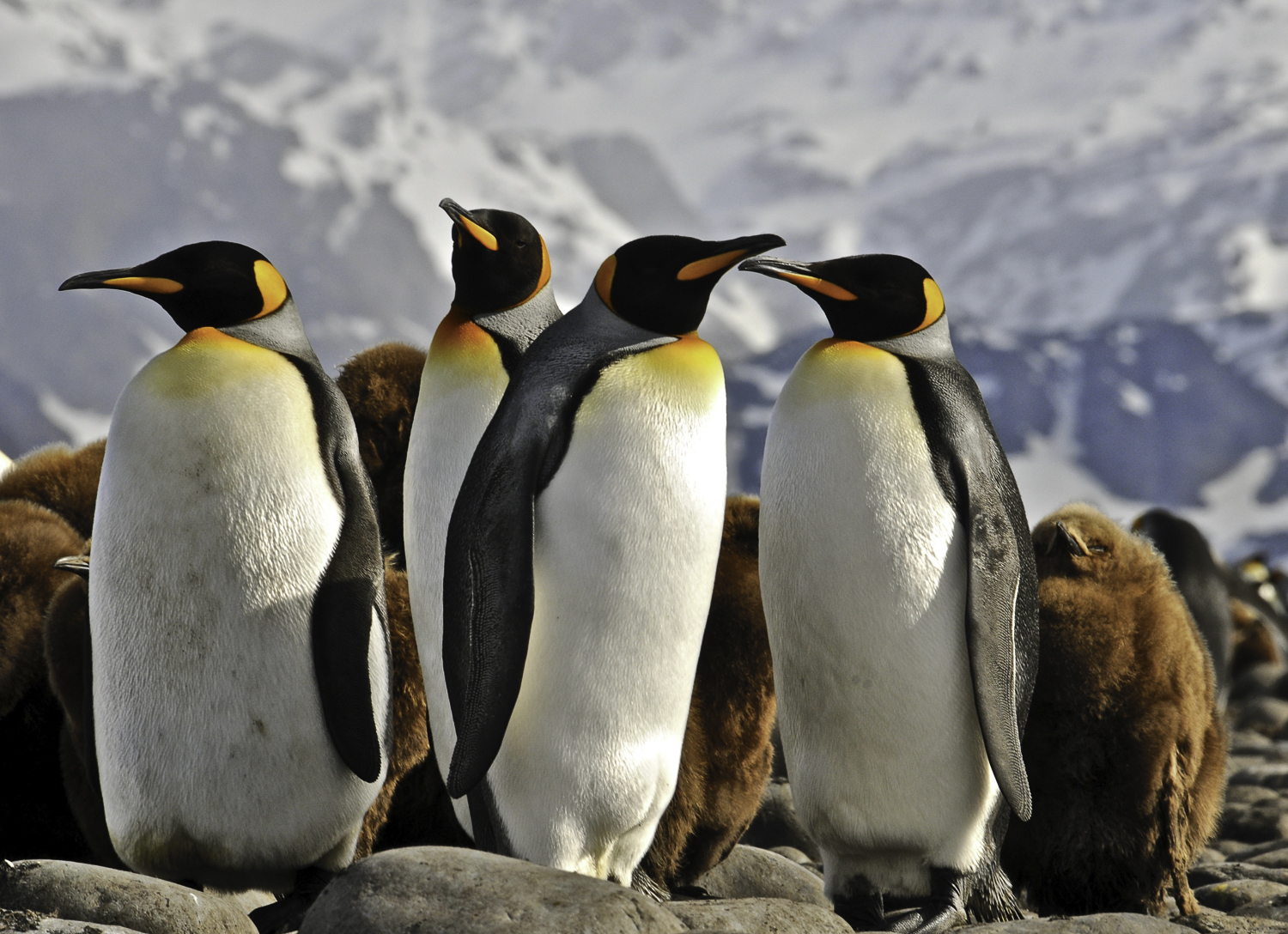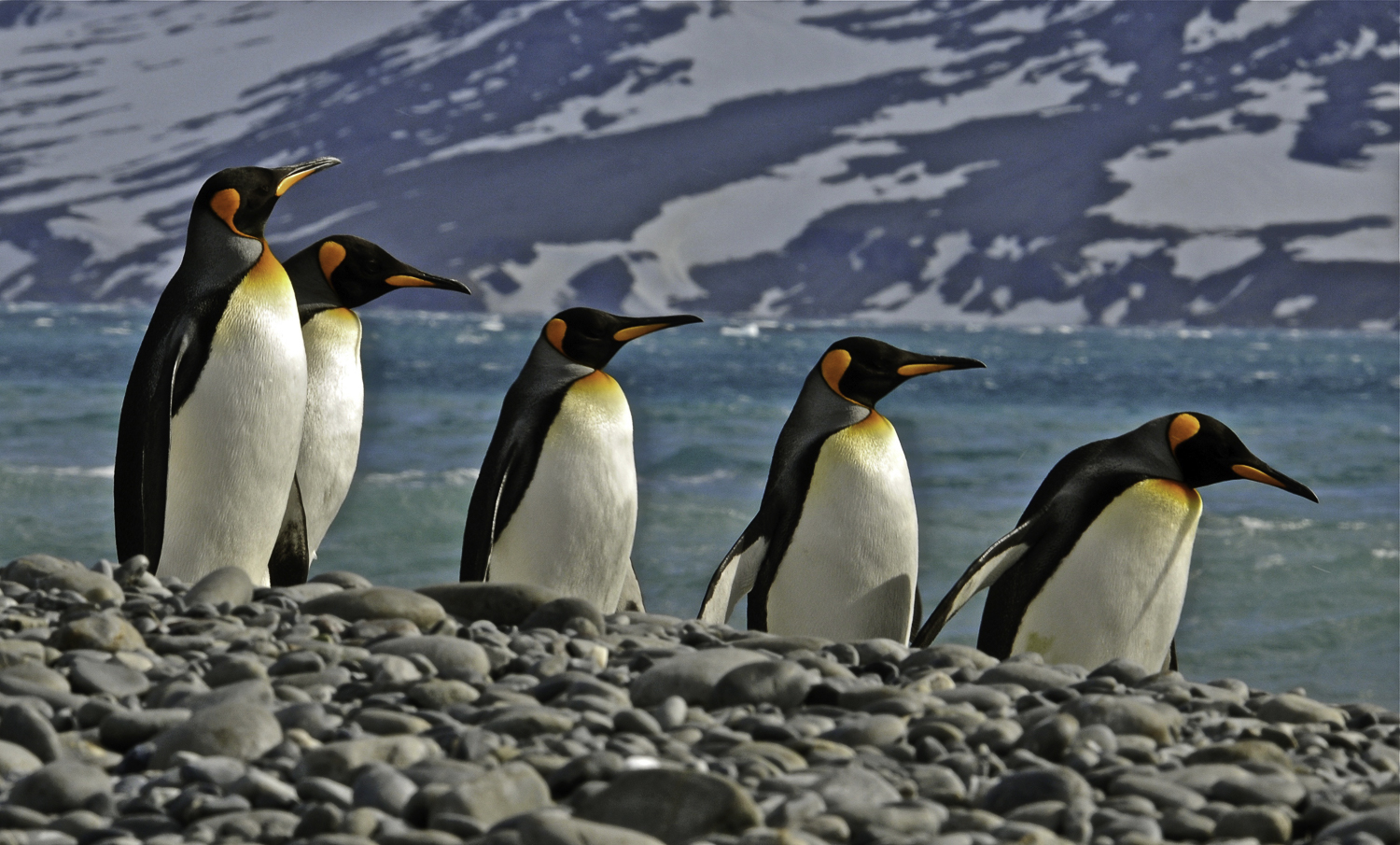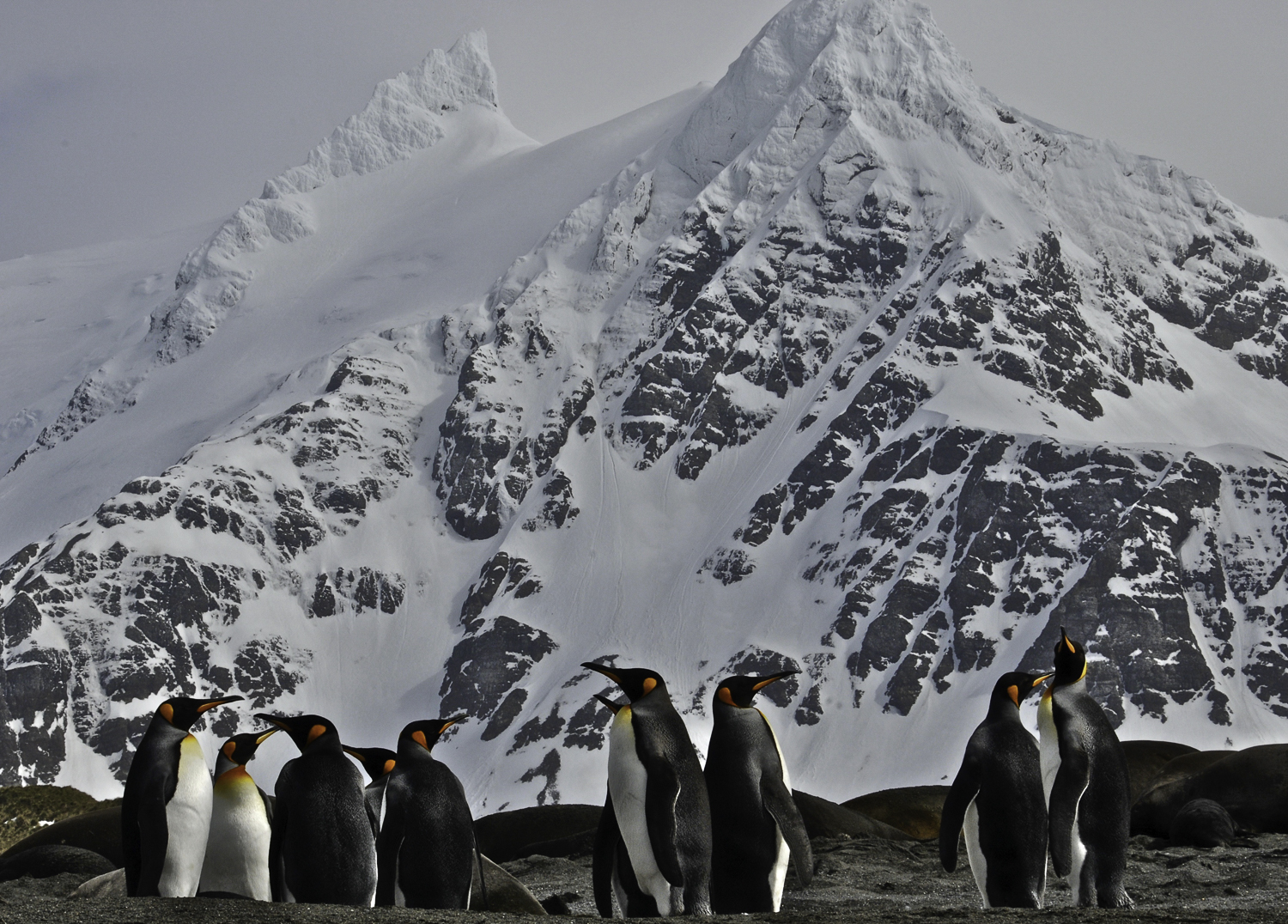ePostcard #47: Bound for South Georgia!
You never forget your first glimpse of South Georgia—the Antarctic oasis where alpine glaciers give way to tussock-dotted headlands and beaches covered with thousands of king penguins, elephant seals, and Antarctic fur seals. For first-time visitors, the juxtaposition of penguins against a backdrop of verdant green tussocks provides a striking contrast to the black and white color palette most people associate with a voyage to Antarctica. Situated south of the Antarctic Convergence zone, the South Georgia archipelago lies more than a thousand miles east of Cape Horn, which is located at the southern tip of South America, and nearly the same distance from the Antarctic Peninsula. Rising straight out of the Scotia Sea, South Georgia’s 100-mile long spine defines the emergent crest of the Scotia Ridge, a curving arc of submarine mountains some 2,700 miles in length that link the Andes to the Antarctic Peninsula. South Georgia and the submerged mountains of the Scotia Ridge sit squarely in the path of the Antarctic Circumpolar Current—the “perfect storm” of conditions necessary for generating the broad-scale upwelling and mixing of the cold, nutrient-rich waters along the polar front. These highly productive waters give rise to immense populations of Antarctic krill, the pivotal species of the Antarctic marine food web. The extraordinary biodiversity of South Georgia and its surrounding waters exceeds that of the Galapagos, its nearest rival, and sustains some of the largest populations of seabirds and marine mammals in the world.
Cloud Ridge’s third and final expedition to South Georgia and the Falkland Islands in 2018 was bittersweet. It was inspired by a desire to celebrate the extraordinary biodiversity and beauty of these islands with kindred spirits before I retired my 40-year touring program. As many of you know, natural history-focused books feed my naturalist’s soul and are what inspired Cloud Ridge’s first visit to the Antarctic Peninsula, South Georgia and the Falkland Islands in 2003. The inspiration for all three trips was not just my fascination with Ernest Shackleton’s Endurance expedition saga but an incredible book, “Antarctic Oasis: Under the Spell of South Georgia,” by Tim and Pauline Carr. These world-renowned mariners sailed their 28-foot wooden cutter (sail only, no engine power!) to South Georgia from England in 1992. Tim and Pauline fell under South Georgia’s spell and became its first year-round residents since whaling station days and would become the guiding spirits behind the development of the museum in Grytviken. When Cloud Ridge returned to circumnavigate South Georgia aboard the M/V Ushuaia with Toronto-based Fathom Expeditions in 2009, it was because Tim and Pauline Carr were members of their leadership team.
The human history of South Georgia is as fascinating as its wildlife, ranging from the tragic era of industrial-scale whaling to the epic survival saga of Ernest Shackleton and his men’s desperate 800-mile voyage in an open dory between Elephant Island and South Georgia. On each of our 3-day, 870-mile voyages from the Falklands to South Georgia, which began with a flight from Punta Arenas, Chile to Port Stanley in the Falklands, stormy weather gave us just enough of a taste of high seas adventure. For those who enjoyed being out on deck, the silver lining was watching those wind-loving mariners—the albatrosses, petrels, skuas, and prions—gliding through the wave troughs beside our ship with precision and grace. Our visit to Shackleton’s grave at Grytviken, toasted with fine scotch, was a poignant reminder of the countless acts of bravery that fueled the fires of the Heroic Age of Antarctic Exploration. My photos for this series of South Georgia ePostcards are from my image archives from Cloud Ridge expeditions in 2009 and 2018. Please enjoy our voyage of discovery!
To help build global awareness, we would appreciate it if you would share this post with your friends and colleagues. Please choose one of the options below which includes email and print! Thank you.





The beautiful third image hints of sedimentary stratigraphy in those mountains. True?
Karen, you are definitely seeing sedimentary shales and sandstones formed from the erosion of volcanoes to the west of the island. South Georgia was formed by continental drift when the Atlantic Ocean opened. An extension of the Pacific Plate drove between the South American Plate and the Antarctic Plate to form the Scotia Sea, with the Scotia Ridge on the eastern border.
With “Bound for South Georgia,” I begin a new posting schedule for my ePostcards: Monday through Friday. There will be no posts on Saturdays and Sundays to enable me to catch up with the science (and give Clyde, our Port Townsend-based webmaster, more time to sail). When I embarked on these ePostcards, my intent was to provide a way for all of us to step away briefly from the daily turmoil of the pandemic. We will have produced 50+ ePostcards in a couple days and many of you have noted an emerging educational theme: “ecosystem sentinels.” My friend Dee Boersma introduced me to the concept of ecosystem sentinels more than a decade ago as it related to penguins and the environmental health of our oceans. I have come to realize that all animals, including humans, are ecosystem sentinels in one way or another. My intent over the next two years, as I take you from Pole to Pole, will be to share 40 years of observations and introduce you to a stunning diversity of ecosystem sentinels.
Stunning sentinels! Thanks for sharing your e-postcards, a catalogue of information and photographs that allowed me to travel to places unknown. You are a sentinel of light!